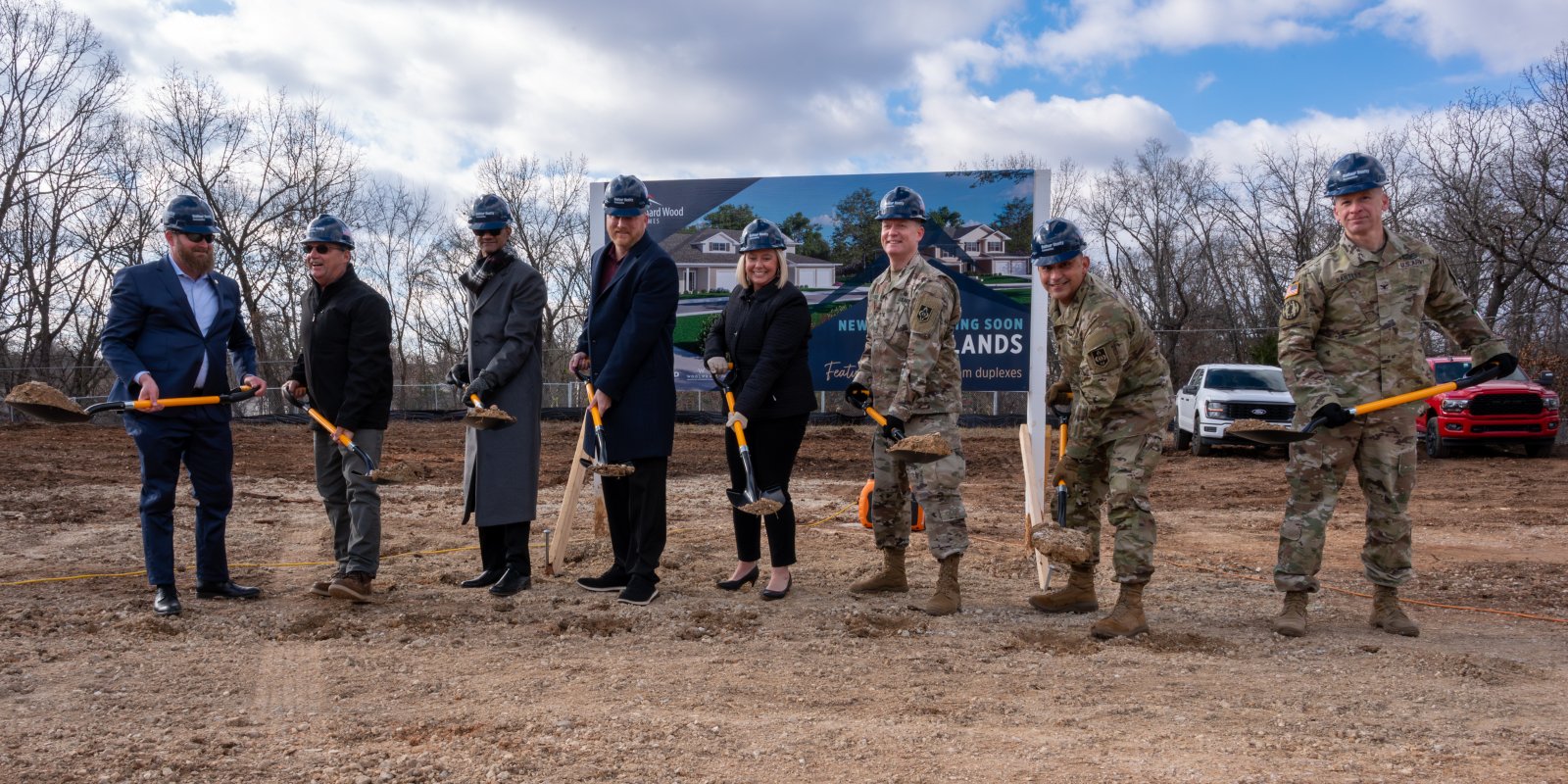CORPS HOSTS CALL TO UPDATE STAKEHOLDERS ON RESERVOIR STORAGE PLANS
Advertisement
Story by Eileen Williamson on 09/16/2019Record rains in the Upper Missouri Basin during the first two weeks of September, has prompted changes to releases from the Missouri River Mainstem dams.
An ad-hoc conference call was held Monday, Sept. 16, to provide an update to basin stakeholders. About 100 callers representing elected officials, emergency managers, levee sponsors and the media participated in the call.
National Weather Service
The National Weather Service provides official river stage and weather forecasts.
Kevin Low from the NWS's Missouri Basin River Forecast Center provided a status of river gages and a weather and hydrologic outlook for the Missouri Basin.
"As many of you realize, we have had a very active hydrologic start to September. There has been rain somewhere in the Missouri River basin each day in September," said Low.
There are broad areas of eastern Montana, North Dakota, South Dakota and northern Nebraska that have received in excess of 400% of the normal precipitation typically received in the first 2 weeks of September.
Accumulated rainfall estimates over the past 16 days exceeds 5 inches over broad areas of northwest Montana, western North Dakota, eastern South Dakota, and north central Nebraska.
There were multiple recording stations which measured in excess of 9 inches over a 72-hour period in South Dakota between Sept. 10 and 12.
"The incredible amounts of rainfall received since the first of September has resulted in major to record flooding along the James, Vermillion, and Big Sioux Rivers. Provisional stage records have been set at 5 South Dakota locations within the James, Vermillion, and Big Sioux basins," said Low.
River Gages currently at Flood Stage include:
Missouri River:
Minor flooding in the Blair NE reach
Minor flooding from Nebraska City, Nebraska to St. Joseph, Missouri and between Napoleon and Miami, Missouri
South Dakota:
James River - Major flood stage on the lower reach
Vermillion River - Major flood stage
Big Sioux River - Major flood stage from Brookings, South Dakota to the Iowa state line
Iowa:
Big Sioux River Major flood stage from down to Akron, Iowa.
Kansas
Big Blue River above Tuttle Creek Reservoir
Its website -- www.weather.gov/mbrfc -- provides river observations and forecasts; weather observations and forecasts, and additional information including the spring flood outlook under items of seasonal interest. The Corps' Missouri River Water Management Division shares all release forecasts with the National Weather Service for incorporation into their forecast products.
Missouri River Water Management Division, USACE Northwestern Division
"Life safety is our priority, and the flood control purpose is driving our decisions, and has been the driver for the last 18 months," said John Remus, chief of the Missouri River Basin Water Management Division.
It is important to understand that floods can and will occur regardless of basin or system conditions, including ice-induced flooding during the winter spring breakup periods, and flooding due to spring and summer thunderstorms particularly along the lower Missouri River which cannot be mitigated by the operation of the mainstem reservoirs.
"It is important to understand that the volume, timing and location at which runoff enters the system significantly impacts the timing and amount of releases. Each runoff season/flooding event is unique and care should be taken when comparing one event to another," said Remus.
2019 continues to be a very wet year throughout the basin. Through the first two weeks of September very heavy precipitation has fallen over a large portion of the upper Missouri River Basin. This has led to excessive runoff into the reservoirs, and into the unregulated streams below the system, particularly the James, Vermillion and Big Sioux Rivers in eastern South Dakota.
Remus outlined the Corps actions and plans to respond to changing conditions.
System releases from Gavins Point Dam were reduced from 70,000 cubic feet per second (cfs) to 60,000 cfs over the weekend. The plan is to hold the system at 60,000 cfs for no more than three days.
"This was an attempt to reduce the peak stage between Sioux City and Omaha. Our models indicated that this reduction may prevent the flood from overtopping Interstate 29 north of Omaha," said Remus.
The second action is to gradually increase system releases from 60,000 cfs to 80,000 cfs.
"We have more than half of the flood control storage to evacuate with just over 11 weeks left before we will have to reduce to our winter releases rates," said Remus.
Based on present and forecast conditions the 80,000 cfs release rate will hold for the next several weeks.
"I want to stress that the temporary reduction in system releases did not precipitate the increased system releases. The increased system releases were going to be necessary to evacuate the flood control storage," said Remus.
Inflow Forecast
Kevin Grode, team lead for Reservoir Regulation in the Missouri River Water Management Division, provided an overview of the mid-month update for Missouri River Basin runoff projections for the upper basin above Sioux City, Iowa.
The Sept. 1 runoff forecast for 2019 was 54.6 Million Acre Feet (MAF).
"Due to the significant and widespread rains in South Dakota, North Dakota and Montana during the first two weeks of September, we have revised that upper basin runoff forecast to 58.8 MAF, which is more than two times average and just a couple million acre-feet less than the record 61.0 MAF observed in 2011," said Grode.
Grode provided some context regarding how significant and widespread the rain has been in the upper basin the first half of September.
Mitchell, South Dakota received 7.6 inches of rain in the first 2 weeks of September. Mitchell's long-term average for the entire month of September is just under an inch.
O'Neill, NE received 5.2 inches and its long-term September average is also under an inch.
Several hundred miles north in Williston, North Dakota, they received over 6 inches of rain when they normally receive an inch or so for the entire month.
Further west in Culbertson, Montana, they received 4.8 inches when they normally receive less than a half inch of rain during September.
Unofficial 2-day readings of more than 10 inches of rain between Sept. 11 and 12 for various locations in eastern South Dakota including 9.5 inches in Brookings, 11.5 inches in Ward, and 13.5 in Sherman were recorded.
"All this rain falling on wet, saturated soils caused by the above-average rains received in July and August has resulted in most of that rain becoming direct runoff filling up the tributaries, which then drain into the Missouri River upstream of the mainstem projects, and in the case of eastern South Dakota with the James, Vermillion and Big Sioux Rivers, downstream of Gavins Point. We will continue to closely monitor streamflow conditions as some of these tributaries have not yet peaked," said Grode.
The updated September runoff forecast for the upper basin is nearly 5 MAF, far exceeding the long-term average of 1.1 MAF and outpacing the previous record of 3.3 MAF set in 2014.
"Given the current saturated soil conditions and the NWS Climate Prediction Center's precipitation outlook for this fall, which is indicating a slightly increased chance for above-normal precipitation in most of the upper basin, our runoff forecast for the last three months of the year is about twice average," said Grode.
The upper basin runoff forecast for 2019 is now 58.8 MAF, more than 30 MAF more than the long-term average of 25.3 MAF.
Upper Basin System Storage and Release Forecast
Mike Swenson, team lead for Power Production in the Missouri River Water Management Division, provided an update of reservoir pool elevations, system storage and the three-week forecast, which was updated Friday, Sept. 13 and will be updated again today.
System storage is currently 65.1 MAF, an increase of about 0.2 MAF since last week. 9.0 MAF of the 16.3 MAF of total flood storage is occupied.
"Later today we will posting an updated short-range, or three-week forecast, to our website," said Swenson.
Gavins Point releases are currently 60,000 cfs. The forecast shows Gavins Point releases will be increased by 5,000 cfs each day starting Wednesday morning and reaching 80,000 cfs on Saturday.
"These releases are needed to manage reservoir levels and continue evacuating water from the reservoirs," said Swenson.
Fort Randall reservoir is at elevation 1363.0, up about 3.6 feet during the last week. Releases from Fort Randall are currently 52,000 cfs. Releases will be stepped up about one day prior to the Gavins Point increases, and releases will reach approximately 75,000 cfs later this week.
Oahe reservoir is at elevation 1615.3, about the same as last week. The reservoir is 7.8 feet above the base of the annual flood control zone. Releases from Oahe are currently about 49,000 cfs and will be increased to 57,000 cfs on Wednesday. At that time releases will be re-initiated from the regulating tunnels. This release will continue through September. Releases from the regulating tunnels will be adjusted at the end of the month for an additional hydropower unit outage.
Big Bend spillway releases were discontinued this morning to help manage the reservoir levels at Big Bend and Fort Randall. Spillway releases will likely be re-initiated on Wednesday and then discontinued upon completion of powerplant maintenance currently scheduled for Friday.
Garrison reservoir is at elevation 1846.7, down 0.4 feet since last week. The reservoir is 9.2 feet above the base of the annual flood control zone. Releases are forecast to remain at 46,000 cfs through September. Spillway releases were adjusted today due to scheduled maintenance on one of the hydropower units.
Fort Peck reservoir is at elevation 2243.5, down 0.2 feet since last week. The reservoir is 9.5 feet above the base of the annual flood control zone. Releases from Fort Peck are expected to remain at 15,000 cfs through September. Spillway flows will be adjusted as necessary late this month during scheduled maintenance at the powerhouse.
Kansas River Basin Conditions
Eric Shumate, chief of the Hydrologic Engineering Branch in the Kansas City District provided an update on reservoir conditions and water management decisions moving forward.
"While we monitor all of our district reservoirs, our current focus remains on the Kansas River Basin," said Shumate.
On average, the four reservoirs in the Lower Kansas River Basin remain at 43% of their flood control storage occupied, with approximately 1.6 MAF of stored flood water within the reservoir system.
The Kansas City District received approval for a deviation in operation of the Kansas Basin reservoirs on Sept. 3. Target flows on the Missouri River at Waverly were increased to 140,000 cfs from 90,000 cfs.
"The deviation is to assist in emptying stored flood waters prior to icing conditions at the reservoirs and ensuring that we will enter next year with full flood control capacity within the Kansas Basin. It is expected that a full emptying of the stored flood waters will take 90-100 days based on current basin conditions," said Shumate.
Current Operations
Due to last week's rainfall in the Upper Missouri River Basin, releases at Milford and Tuttle Creek are being reduced with reductions continuing over the next few days.
As the Missouri River stage increases approach St. Joseph, Missouri, flows from Perry and Clinton Reservoirs will be reduced to ensure releases remain below the Waverly target of 140,000 cfs.
Based on current river forecasts, the four lower Kansas River basin reservoirs will likely be reduced to match inflows to maintain pool elevations or reduced to low flow releases by Thursday.
When space is available, Kansas reservoir releases will resume in accordance with the approved deviation not to exceed the 140,000 cfs target at Waverly.
"While we expect the increased releases from Gavins Point Dam to delay the emptying of stored flood waters, we still anticipate that the current deviation in operations will allow the Kansas River Basin reservoirs to empty their stored flood waters prior to the end of the calendar year," said Shumate.
Kansas City District Emergency Management Levee Status
Mike Dulin, Emergency Manager for the Kansas City District provided an update on emergency operations and conditions following the torrential rainfall in the upper basin.
National Weather Service forecasts indicate the Missouri River crest to reach Rulo, Nebraska Saturday or Sunday, Sept. 21 or 22 at a stage of about 22 feet.
"While no levees are expected to overtop, levees that were previously breached during the March event could see some flood waters move back into the bottoms as the crest passes. We expect the crest will be most noticeable as it moves through northwest Missouri, particularly Holt, County. Buchanan and Platte County will see a rise as well, but no major impacts are anticipated at this time," said Dulin.
Requests for levee rehabilitation assistance stands at 106 with approximately 67 levee rehabilitation projects anticipated after bundling multiple requests for segmented levee systems.
Of 48 project information reports submitted to the Northwestern Division for approval, 41 been approved.
"Our survey teams have made great progress on damage assessments, to date they have completed 59 "boots on the ground" assessments and should only have two or three levee systems left to inspect once field conditions allow," said Dulin.
Construction on the emergency measure to close breaches on the Big Tarkio Levee in Holt County, Missouri is over 50% complete.
Inaccessibility related to flooding has stalled rock placement at the Mill Creek site. A plan to improve accessibility to the site by raising Highway 111, should begin soon.
"Please be river aware as high water moves through over the weekend. While no major impacts are expected at this time, flood water can always pose a threat to life safety, please be safe and always pay attention to watches and warnings issues by the National Weather Service," said Dulin.
Omaha District Emergency Management Levee Status
Matt Krajewski, chief of Emergency Management for the Omaha District provided an update on levee conditions.
To date, 12 initial breach closures within the Omaha District's area of operations are complete, with 21 remaining.
Missouri River Levee Status
R616-613 - A construction contract was awarded on Aug. 7 with a contract completion date of Sept. 30.
"We continue close coordination with the levee sponsor, the Papio-Missouri Natural Resources District to make sure that the NRD's plan to raise this levee is not hindered by the rehabilitation process," said Krajewski.
L611-614 - A follow-on contract was awarded Sept. 7 with work consisting of seeding, crest repairs, critical section loss repairs. Forecast river stages this week will not impact this area.
L601 - Emergency breach erosion control matting and riprap placement will be complete this week. Forecast river stages this week will have some impact on the sand berm, but the constructed levee section is not expected to be affected.
L-575 - Areas are receiving additional berm width and riverside face protection. These efforts are necessary for final repairs and will reduce risk to the area with respect to the forecast stages.
L-594 - A contract to close the breach on the tieback levee was awarded today. Work on this breach will begin soon.
L-550 A & B - Breach repairs continue to receive fill material per the original breach closure plans and specifications.
"Additional measures to provide additional freeboard and reduce risk to the repairs with respect to the forecast river stages are being taken," said Krajewski.
"For the Hamburg Ditch 6 levee, we remain on track to accept bids and award a construction contract by the end of September," said Krajewski.
Four contract awards are expected in September and one in early October for the tributary levees damaged in the March flooding.
"Life safety continues to be our number one focus while undertaking the repair of the levee systems. We continue to work with Federal, State, and local emergency management agencies to keep the public informed," said Krajweski.
Advertisement
SHARE:



